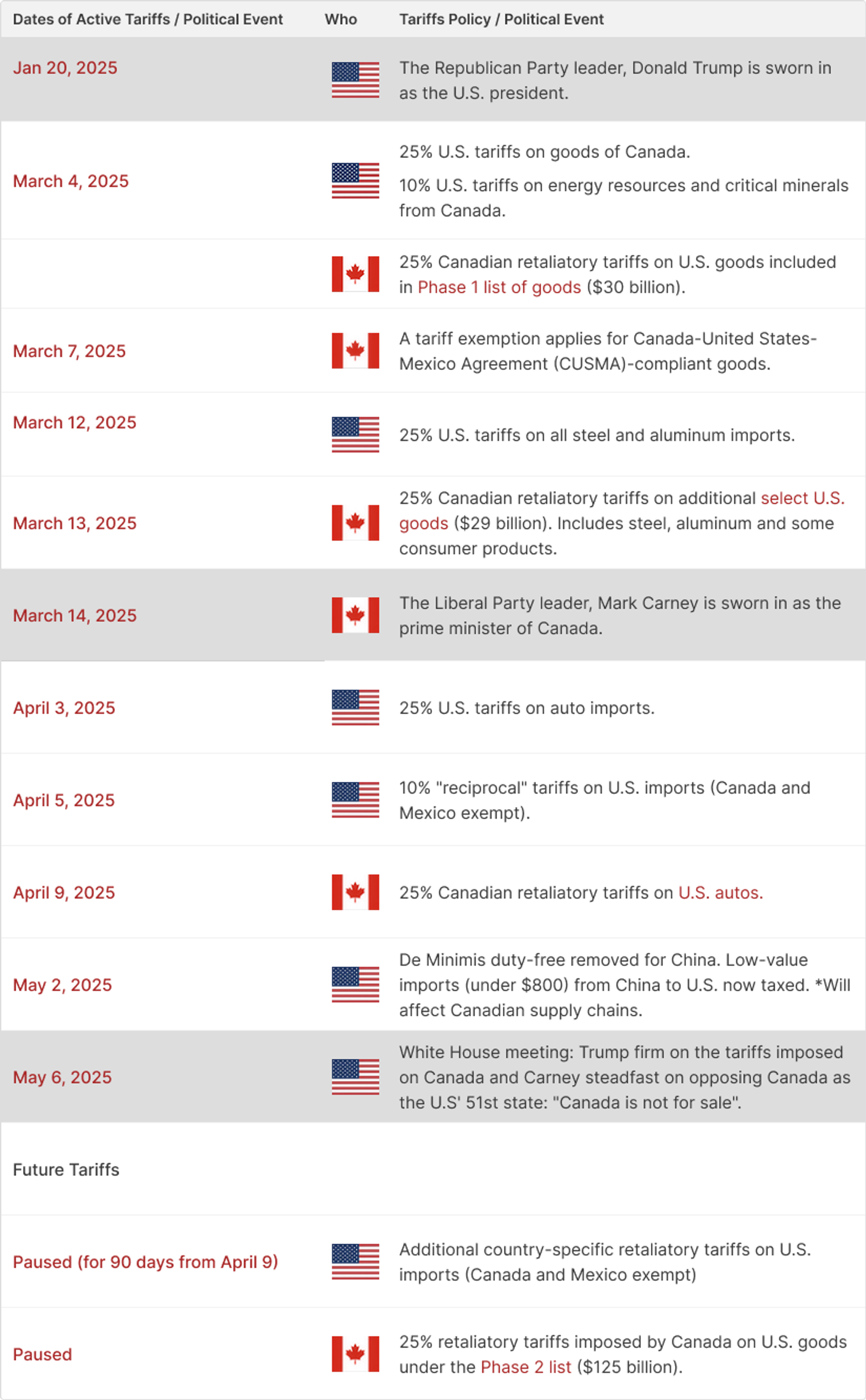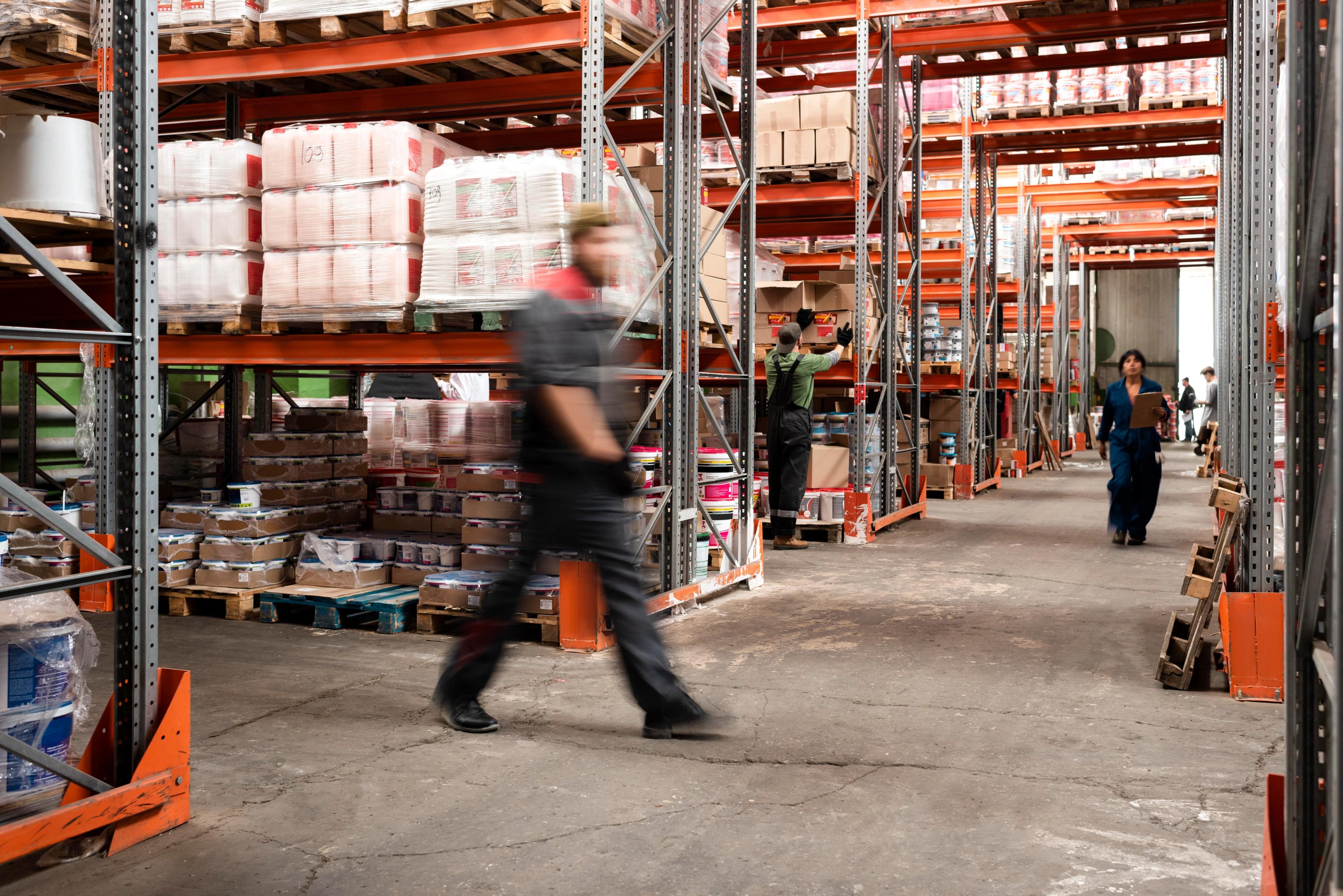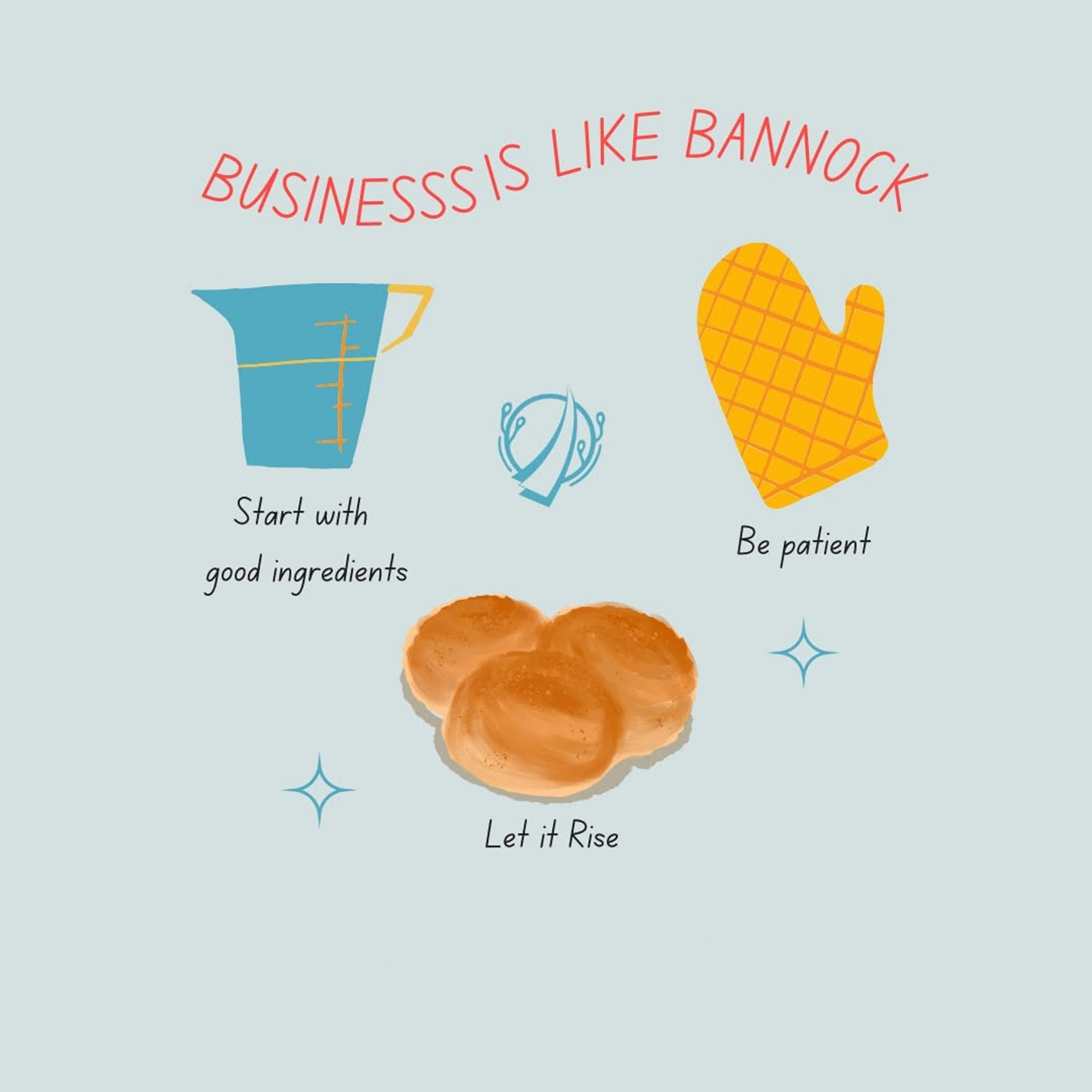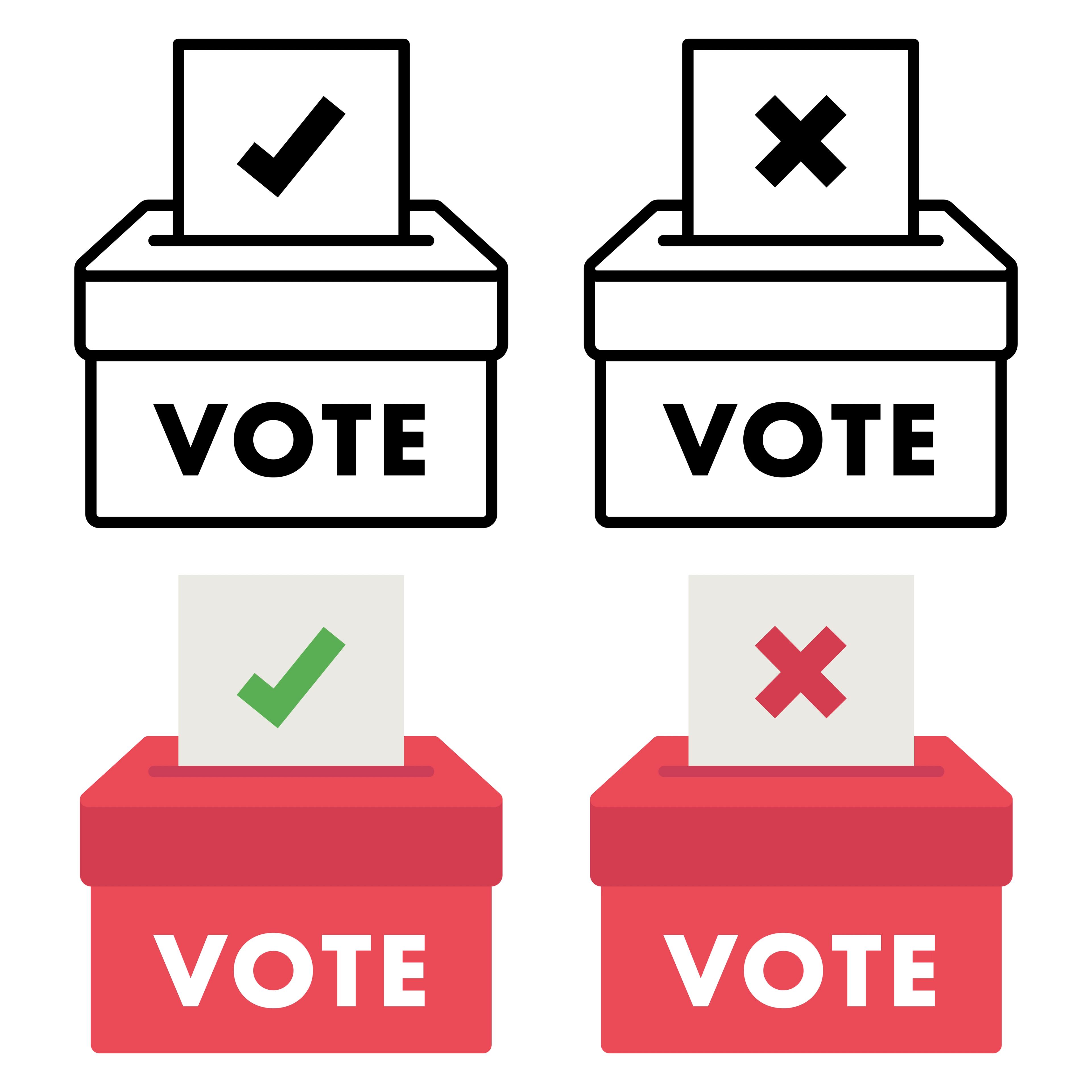2025 Landscape Revisited: What’s Happening Now for Indigenous Communities, Canada and the U.S.
Avneet Takhar
Building on our previous blog, which outlined the 2025 landscape for Indigenous communities in Canada and the U.S, this follow-up dives deeper into the current legislations and economic developments, unpacking what recent changes—like trade tariffs—mean for businesses, and offering tools to help them adapt and succeed. It also sheds light on critical social shifts, and emerging opportunities for Indigenous peoples across the regions.
We’ve organized the content into two parts for a digestable read! Part 1 covers tariffs; Part 2 revisits and updates the topics from our earlier blog.
So without further ado, let's jump in.
Part 1: Canada- U.S. Tariffs
Timeline of Key Dates: Tariffs & Political Events

*Trade war still currently active and continuing
🇨🇦 🇺🇸 What the Canada-U.S. Tariffs Mean
These tariffs are reshaping trade and daily life in Canada. Learn how they’re influencing business operations, consumer prices, and social outcomes- with trusted resources to guide you through the changes.
We unpack the core insights that you need to know.

💵 Key Considerations at a Glance
Navigating the impact of tariffs means being aware of the main factors to look out for with the evolving landscape, which are the following:
- Increased costs for U.S. imports
- Pressure on pricing and margins
- Canadian dollar may fluctuate
- Shift in market conditions
Businesses: How to Strategize against Canada-U.S. Tariffs
Tariffs between Canada and the U.S. are reshaping pricing and supply chains—especially for small and medium-sized businesses. Here’s how to stay resilient and plan ahead.

💸 Absorb or Pass Along Costs?
Businesses are weighing up whether to absorb tariffs (like the 25% upcharge) or pass them onto customers.
- Some are delaying U.S. sales or renegotiating terms with U.S. buyers.
- Consider: will U.S. customers pay more, or buy domestically instead?
- Explore targeted price increases (e.g. on high-margin items only).
- Consider blended strategies—absorb part, pass part.
- Watch profit margin impacts and evaluate demand and supply across product lines.
- Small businesses are more vulnerable to sustained cost shocks and may need added support mechanisms.
🌐 Look Beyond the U.S.
Tariffs can be a great way to diversify markets and reduce dependency.
- Shift sourcing to Canadian or other international suppliers where possible.
- Leverage diaspora connections to access new export markets.
- Explore tariff-free trade agreements—Canada has deals with over 50 countries (we provide more details in our resources below).
- Use examples like:
- Switching to Canadian suppliers for cost savings.
- Launching private-label lines to improve pricing control.

🇨🇦 Strengthen Your Canadian Base
Reinforce operations and consumer connections at home.
- Minimize U.S. sourcing where possible—by using local ingredients and Canadian supply chains.
- Adapt to shifting local demand (e.g., there may be fewer dining-out purchases moving forward).
- Offer alternatives suited to cost-conscious domestic demand—such as bundled products or smaller pack sizes.
- Manage currency risk when purchasing in USD—especially as the CAD fluctuates.
- Showcase being Canadian-owned - with small storefront posters - highlight if you're woman, or Indigenous-owned, and include founder images.

🏗️ Rethink Supply Chain and Logistics
A flexible supply chain can soften the impact of tariffs.
- Streamline operations and explore warehouse placement—like opening in the U.S. via third-party logistics (avoids double tariffing).
- Ship larger quantities upfront to reduce costs per shipment.
- Reduce reliance on China or single-source imports. The De Minimis duty-free has been removed for China, so their cost for low value goods imports has increased. This impacts supply chains across North America, especially for Canadian companies that rely on their overseas commerce.

🧾 Reassess Contracts, Terms & Business Models
Use this critical moment to renegotiate and refocus.
- Revisit all contracts: clarify shipping terms, shared cost clauses, and payment flexibility.
- Look at bulk purchasing or early payment discounts (e.g., 5% savings on cash deals).
- Pivot to more resilient business models—such as services, subscriptions, or value-added offerings.
⚙️ Use Tools, Not Guesswork
Reduce inefficiency through automation and smart finance practices.
- Audit and cut unnecessary software—optimize for ROI.
- Leverage automation to optimize workflows, warehousing, and cash flow.
- Re-evaluate decisions like letting go of employees—optimize first, and get them trained on using AI tools.
- Digital transformation isn’t optional—it's a resilience multiplier.
- No tariffs currently exist on digital goods, but stay informed as regulations evolve.
- Be mindful of gender gaps: women remain less likely to adopt AI, but the gap is closing. Design onboarding and automation rollouts to be inclusive and accessible.
- There's also opportunity in financing for women in tech, particularly in Canadian tech hubs (detailed in our resources below) —a great time to unlock innovation-based investment.
🤝 Collaborate and Communicate Proactively
Work with your ecosystem to build shared solutions.
- Negotiate with contractors and suppliers—split tariff burdens if possible.
- Seek out government programs and trade resources.
- Explore joint ventures or partnerships for warehousing, distribution, or sourcing to cut overhead.

🧭 Build Long-Term Resilience
Tariff planning isn’t just about the next quarter—it’s about future-proofing.
- Build a redundancy plan across your sourcing and logistics.
- Diversify your supplier and customer base geographically.
- Adopt an “anti-fragile” mindset: use disruption as a launchpad for innovation and strength.
- Focus on your core revenue drivers ("cash cows") while testing new growth areas.
⚠️ Note: Tariffs Are Inflationary
Prices will likely rise across sectors, and small businesses often feel it first. But with the right strategy—efficiency, planning, and partnerships—you can navigate the storm and come out stronger.
🏣 Business Sectors Most Likely to Experience Changes
As tariff measures take hold, certain industries are more vulnerable to cost pressures and supply chain disruptions, particularly in the sectors below:
- Small-medium businesses/enterprises (SMBs/SMEs)
- Retail
- Hospitality
- Food industry
- Healthcare
- Aluminium/steel industry
- Construction industry (rising costs due to tariffs may impact new projects)

🧠 Mindset – Turning Crisis into Opportunity
By reframing crises as catalysts for change, Canadian businesses can reassess priorities, strengthen supply chains, and embrace smarter investments. Now is the time for bold thinking, strategic renewal, and turning uncertainty into momentum.
- Rethink investments – shift focus to what truly matters.
- Prioritize customer access and resilient supply chains.
- "Never let a good crisis go to waste" – act with bold opportunism.
- Wake-up call for Canada – reduce reliance on the U.S.
- Audit your business – streamline and cut inefficiencies.
- Urgency demands introspection and strategic realignment.
- Policy renewal can create momentum for change.
- Remember: Where there’s threat, there’s also opportunity.

Businesses: Resources for Canada-U.S. Tariffs
📞 Business & Government Support (Federal & Provincial Updates)
Stay informed on aid from your province, the federal government and Canadian business support organizations.
Canadian Federation Independent Businesses (CFIB):
- 🔗 Keep updated on the Canada-US tariffs (includes "Proudly Canadian- owned" storefront sticker)
- 🔗 Reach out to the Business Support helpline
Startup Canada:
Trade Accelerator Program:
Business Development Bank of Canada (BDC):
Government of Canada:
- 🔗 Canada's response to U.S. tariffs
- 🔗 Support for Canadian businesses and workers
- 🔗 Work-Sharing Program – ESDC (flexible for employers & employees)
Export Development Canada (EDC):
- 🔗 Finance and insurance solutions
- 🔗 Preparing your business for tariffs: A checklist for exporters
- 🔗 Webinar, watch on demand: Planning for expansion in a changing global market
- 🔗 How Canadian tariffs on U.S. goods may affect your business in 2025
- 🔗 Made in Canada: Understanding certificates of origin
CanExport:
- 🔗 Funding that helps your company grow into global markets
- 🔗 Funding applicant's guide: Export SMEs, export diversification
Trade Commissioner:
- 🔗 Supporting Canadian exporters through United States tariff challenges (includes CUSMA compliance support)
- 🔗 Funding and support programs for doing international business
- 🔗 Contact the Trade Commissioner Service (advice for export strategy)

📦 BC-Based Business Support
Resources that back BC local entrepreneurs and SMBs/SMEs with expert advice.
Export Navigator:
Trade and Invest British Columbia:
✅ Women Entrepreneurs: Essential Resources
A powerful community forum provides key information, and unites Canadian women leaders to navigate tariffs, global trade barriers, and inclusive economic growth.
Women's Enterprise Organization of Canada (WEOC):
🌱 Sector-Specific Support
Agriculture and hospitality industry programs and aid that caters to the unique challenges and growth opportunities within these essential Canadian sectors.
Farm Credit Canada (FCC):
📜 Trade Agreements & Compliance
Check that your business qualifies under trade rules for North American exports, and verify that your products meet criteria for trade agreement benefits.
CUSMA / USMCA Compliance:
Free Trade Agreements:
CPTPP Agreement (Indo-Pacific Markets):
CETA Agreement (EU-Canada):
- 🔗 European Commission: EU-Canada CETA Agreement (an agreement that compliments the arts, culture, health, and beauty sectors well)

We hope this has provided you with all the must-know information about tariffs! Although preparation is a large part of these trade changes, so come with it opportunities that Canadians can leverage with a new and exciting outlook, such as working with other global markets and also coming together in supporting local. As aforementioned, these "disruptions" are a cause for innovation to spark, and to come out stronger -together.
As we wrap this part of the write-up, we hop into Part 2 revisiting and updating the themes first explored in our previous 2025 landscape blog.
We invite you to read on, and see what's new!
Part 2: (An Update) Valid ID, Social Media, Indigenous & Legal Shifts
We provide up-to-date news on the subjects we previously touched on such as access to valid I.D, economic pathways for Indigenous communities, social media shifts, and legislative changes.
Indigenous Communities: The importance of carrying a government-issued ID
🇨🇦 Canada
Crossing the U.S-Canada border at both land and marine ports of entry for First Nations folks who are "Status Indian" is permitted for work and travel under the Jay Treaty agreement (also applies to Native American folks).
However, given recent political developments and growing reports of Canadians travelling into the U.S. being detained, it’s especially important to carry valid identification, as U.S. border crossings have become more complex.
Having a recognized form of ID, such as a Secure Certificate of Indian Status (SCIS) card, can help navigate and potentially avoid bureaucratic hurdles.
*“Status Indian”: person registered under the Indian Act, usually First Nations. Note: The term "Indian" is for self identification only.
*Note: The term Native American is for self identification only.
🇺🇸 U.S.
Since May 7, 2025, U.S. travellers need a Real ID-compliant accepted form of government-issued ID (such as an official tribal ID or passport) to board domestic flights or access certain federal buildings and facilities.
A Real ID has a star on the top and meets enhanced federal security standards. To obtain one, you must provide specific documents verifying identity, Social Security number, and residency. Find out more via PBS News and on the TSA website.

Jay Treaty - Potential Opportunities
Since the introduction of tariffs, attention has turned to the Jay Treaty. The agreement affirms the rights of Native American and First Nations peoples in Canada and the U.S. to freely travel and work across the border. A powerful example is First Nations entrepreneur George Bahm, founder of Wild Yukon Furs—a store specializing in fur jewellery and handmade goods. He’s successfully leveraging this agreement to operate his business across the U.S.-Canada border.
Although no legislation currently exists to support cross-border Indigenous trade, there have been legal discussions about activating trade provisions under the Jay Treaty.
During a key development in February 2025, the National Congress of American Indians (NCAI) hosted discussions in Washington, D.C, where National Chief Cindy Woodhouse Nepinak invited First Nations leaders from both countries to unite in defending their collective rights and economic interests against these tariffs.
*At this stage, these remain trade discussions without any implementation.

The Evolving World of Social Media
🦋 Bluesky
As outlined in our previous 2025 landscape feature, Bluesky has been on the upsurge as the alternative to Twitter and in April they launched the "blue check" as a marker for trusted verifier accounts. The ‘blue check’ has long marked verified, notable accounts on social media, and Bluesky has now adopted this trusted authentication standard.
📱 TikTok
The Trump administration have delayed the TikTok ban on the U.S. claiming that that they will extend the June 19th deadline (originally expected on April 5th), if the owner ByteDance doesn't settle with a deal to a non-Chinese owner by then.
Bytedance has put a hold on any agreements since the announcement of tariffs.

Legislation Changes
Legislation changes across Canada remain unchanged and intact according to our previous blog but here are a few updates on the U.S:
💵 Economic Policies
- Tax Cuts: The most prominent areas that will contribute to the estimated $5 trillion tax cuts are:
- Permanent Extension of 2017 Tax Cuts: Making individual and business tax reductions from the Tax Cuts and Jobs Act (TCJA) permanent. This benefits higher-income households significantly due to reductions in top income tax rates and estate taxes.
- New Tax Relief Measures: Introducing tax breaks for tipped workers, overtime pay, and interest on U.S.-assembled car loans. These policies are deemed as "worker-friendly" but add to the overall cost of the tax package.
- Elimination of Clean Energy Incentives: Ending the clean energy subsidies established during the Biden administration. While framed as a cost-saving reversal, it aligns with the administration’s fossil-fuel–friendly stance and shifts the tax burden landscape.
👀 Tariffs
Trade tariffs are now in implementation and additional tariffs will follow (detailed above, in Part 1 of this article).
🏥 Healthcare Policies
A proposal of almost $880 billion in cuts has been made mostly to Medicaid, which provides health coverage to low-income households. This could result in millions of people losing their health insurance, learn more here.

🗳️ Voting Rights
The SAVE Act- recently passed bill in Congress (has not been signed into law as of yet), requires in-person proof of U.S. citizenship—such as a passport, birth certificate or other citizen document—for voter registration, with documentation matching one’s current legal name.
This poses barriers for married women, minorities, and transgender individuals, whose legal names may differ from their birth document, and who may face challenges or costs in obtaining updated records. Learn more here.

As we close Part 2 and conclude this article we hope it's offered helpful insights into how the current policies, social and political changes impact Indigenous communities and people across Canada and the U.S.
Thanks so much for sticking with us! We know it was a long read, but it's our intention to provide useful context to stay ahead of the curve. Being informed is key to taking action and making decisions that align with your values and circumstances.
And as a last message we share this important sentiment: no matter what happens in the world of politics, borders are a colonial concept and do not adhere to the values of Indigenous peoples on Turtle Island.

*Please note: the term "Indian" is for self-identification only.
➡️ We encourage you to share this article with friends and family who may find it useful.
*Citizens are strongly recommended to stay informed and engaged as these policies unfold, with some not yet finalized and under development.
🫶🏽 We believe in keeping Indigenous communities informed with topics that matter. Subscribe to our monthly newsletter to stay connected and in the know!